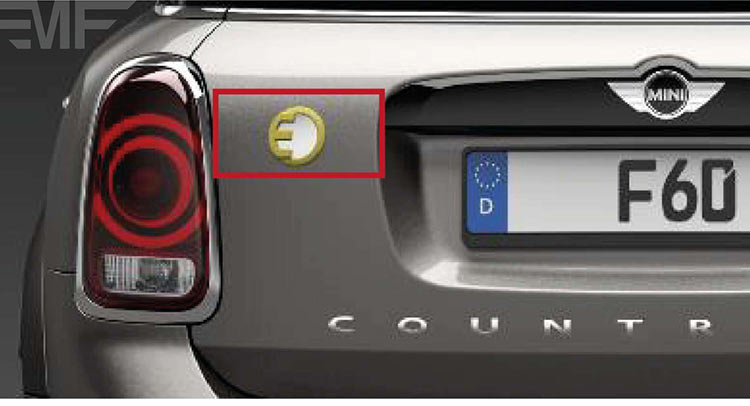MINI’s next-generation Countryman is close to its debut, and it will be the British car maker’s first model to offer a plug-in hybrid version.
Countless of camouflaged prototypes and mules have been spotted during its development, but this time a few leaked images found by Motoring File allegedly show some of the upcoming vehicle’s details and confirm it can be commissioned as a PHEV.
Judging by the emblems, MINI is resurrecting the “E” branding for its plug-in hybrid and electric variants using the same logos as it used on the original all-electric MINI E, although the location of the charging port migrated below the vehicle’s A-pillar, right next to the front wing.
Albeit it will sport an evolutionary design, compared to the outgoing model, the new Countryman will be a brand-new car, as it’s based on the BMW Group’s ULK2 platform shared with a number of models, including MINI’s own Clubman and the BMW X1.
Known internally as the F60, it will be wider and longer than its predecessor, as it will grow in size to around 4.25 meters in length, with similar gains in height and width to improve both passenger and luggage space.
For in-town driving, the MINI Countryman E will act as an 100% electric car, most of the time – as long as you won’t drive more than ~38 kilometers (24 miles), or faster than 80 km/h (50 mph).
According to the report, power will come from a front wheel drive 1.5-litre three-cylinder BMW TwinPower Turbo engine, generating 135hp and 220 Nm (162 lb-ft) of torque, and an additional high-voltage generator on the front axle which adds for brief periods of time up to 15 kW (20hp) and 150 Nm (111 lb-ft), generates electric power while on the move and enables the engine to be started and turned off very smoothly thanks to its higher output compared to conventional starters.
The drivetrain is described as a less potent version of the one found on the i8 hybrid supercar, but enough to push the MINI Countryman E from 0 to 100 km/h (62mph) in 6.5 seconds, while averaging an EU fuel consumption of two liters per 100 km in hybrid drive.











